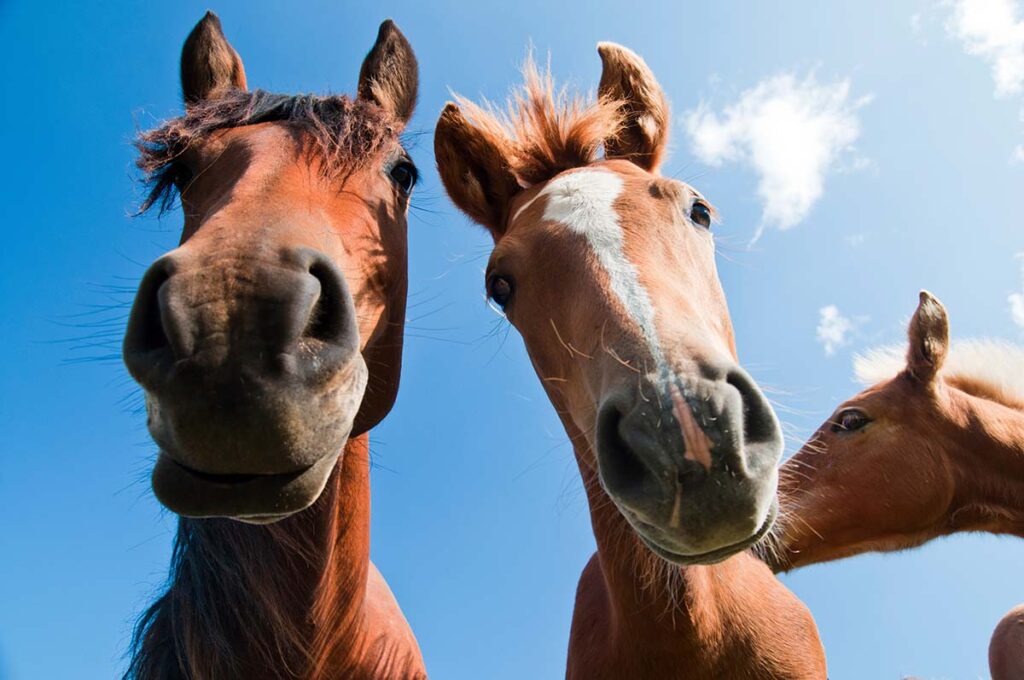Have you scrolled through a nutrition company’s website or stood in your farm store’s feed aisle confused by all the options? If so, you’re not alone! Advancements in equine nutrition have given owners more options to feed their horses, but all those options might leave you feeling like you need a PhD in equine nutrition to properly feed your horse. We’ve created the following descriptions to help you decipher what’s in each bag.
Forage
Forage is the most important part of your horse’s diet and should provide most of his daily calories. Forage comes in the following forms:
- Pastures grass
- Hay, either grass (orchardgrass, Timothy, Bermuda) or legume (alfalfa)
- Haylage
- Cubes
- Pellets
Ration Balancers
Forage alone might not meet all your horse’s nutritional needs. For example, soil quality can affect the amount of minerals hay contains, and curing and storage can reduce its protein and fat levels. Ration balancing feeds are highly concentrated and designed to supplement those deficiencies by adding trace minerals, protein (including amino acids), and fat to the diet. Ration balancers usually have small serving sizes and are good choices for easy keepers (horses that gain weight easily).
Concentrate/Performance Feeds

Concentrates are feeds that include some protein, fat, and fiber, as well as vitamins and minerals, to complement your horse’s forage-first diet. These feeds are formulated and marketed to meet the specific needs of different classes of horses, depending on their age and workload. Always feed at least the minimum amount of a concentrate feed, according to the manufacturer’s instructions, unless you are providing additional supplementation.
Complete Feeds
Complete feeds are mixes that contain everything your horse needs in his diet, including forage (usually in the form of beet pulp and/or hay pellets), fat, protein, vitamins, and minerals. These feeds are most commonly fed to senior horses that have trouble chewing more traditional diets. They’re also good options for feeding horses during hay shortages or in areas where hay isn’t readily available.
Whole Grains
While people have long associate horses with oats, equine nutritionists and veterinarians don’t generally recommend whole grains, especially corn or COB (corn, oats, barley), as a food choice for the modern equine diet and instead advise horse owners to use feeds formulated specifically for horses. Diets high in grains and starches can be related to certain diseases, such as equine gastric ulcer syndrome, and aren’t recommended for horses with metabolic issues.
Sweet Feeds
The term “sweet feed” traditionally has referred to mixed feeds that include oats and pellets that are bound with and made more palatable for horses by adding molasses (the “sweet” in “sweet feed”).
Take-Home Message
It can feel overwhelming to wade through all your horse feed options, but with a basic understanding of feed types and components, you can make informed decisions about your horse’s diet. By considering factors such as forage, concentrates, and supplements, you can provide your horse with a balanced diet that meets their nutritional needs. Still confused? Chat with your veterinarian or an equine nutritionist.
Related Reading: How To Choose Horse Feed: It’s All About Balance








